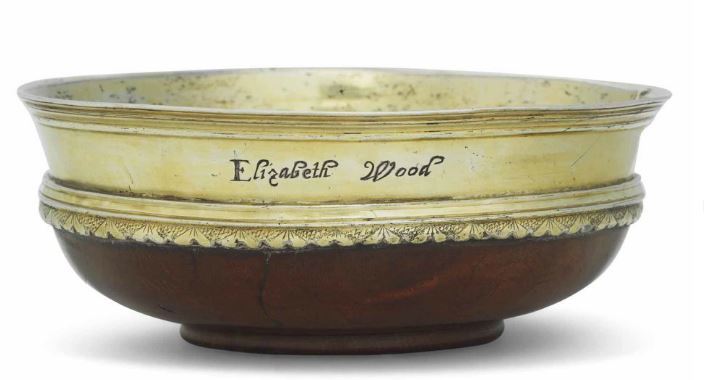A FAMOUS piece of English silver will be sold in London on Thursday evening.
The honour falls to Christie’s to offer the celebrated ‘Elizabeth Wood’ mazer, an inscribed drinking vessel hallmarked London, 1527, and thus a survivor from the rein of Henry VIII.
This maple bowl (illustrated) features a silver-gilt mount with moulded lip, its similar lower border decorated with a band of stylised foliage.
The centre of the bowl (unseen in the photograph) shows a moulded boss engraved and enamelled in translucent blue and green with a pomegranate.
The bowl takes its name from its rare contemporary inscription – ‘Elizabeth Wood’. The opposite side has a later engraved crest below an earl’s coronet, the marks of Geraldine, Countess of Milltown, (1841-1914), in Ireland.
It is just under six inches in diameter and carries a double-headed arrow mark of an unknown maker. Alas, nothing is known of Elizabeth Wood.
As well as being used as drinking vessels, early mazers had a ritual function at funerals of cleansing away the sins committed by the dead person. They were used as begging bowls, particularly by lepers, and also appear in the inventories of monastic houses from the 14th to the 16th centuries. Canterbury had 132 mazers in 1328.
They were usually made from maple and often demonstrate the spotted patterning of the wood from which they take their name (from the German work Masar, which means spot or speckled). They were normally small, shallow bowls, embellished with engraving, always with a deep silver rim, and sometimes with a raised foot.
Entering the sixteenth century, they graced the dining tables of many wealthy families. Few survive – though the late medieval Watson Mazer, c1550, is one of the treasures of the National Museum of Scotland. Also of maple, it carries the inscription, ‘Money lost little lost, honour lost much lost, heart lost all lost.’
The example to be sold on Thursday has passed through Christie’s on at least three previous occasions, making £500 in 1905, and £400 in July 1914 when, I suspect, thoughts were on other matters. The price also tumbled during the Second World War, when it was sold on again for just £270.
Much exhibited and featured in reference works, the mazer is estimated to sell for a punchy £120,000 – £180,000.










